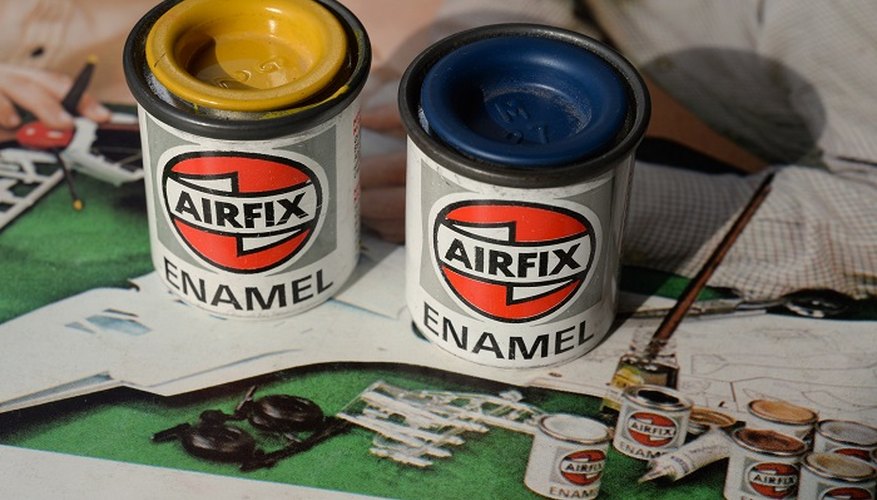Enamel paint is oil-based and dries to a hard, glossy finish. It is commonly produced by adding varnish to paint and is primarily used in spray, modelling and other specialist paints to provide a high-gloss sheen. Removing enamel paint from metal might seem like an impossible task, but with the proper tools, chemical solvent, a little patience and elbow grease, you can restore metal to its original condition in a timely manner.
Prepare a well-ventilated work area before proceeding with a chemical solvent to dissolve the paint. Work outside, or open windows and run an electric fan in the room to improve circulation.
Cover your hands with solvent-resistant gloves to prevent alkaline burns. Paint thinner is highly effective at stripping paint but can also burn the skin.
- Enamel paint is oil-based and dries to a hard, glossy finish.
- Cover your hands with solvent-resistant gloves to prevent alkaline burns.
Follow the manufacturer's instructions for proper application of the paint thinner. Distribute a smooth, even coat on to the painted metal using a paintbrush or paint roller.
Allow the paint thinner to soften the enamel for the period of time indicated on the product label. Use a putty knife or paint scraper to carefully loosen the dissolving paint.
- Follow the manufacturer's instructions for proper application of the paint thinner.
- Allow the paint thinner to soften the enamel for the period of time indicated on the product label.
Scrub the remainder of the enamel paint with a scouring pad or medium-grade steel wool. Keep a sponge and water nearby to frequently wash the excess paint from the metal.
Rinse the surface thoroughly with water to remove the loose paint and solvent. Dry it with clean towels to eliminate the moisture. This will prevent the bare metal surface from rusting.
